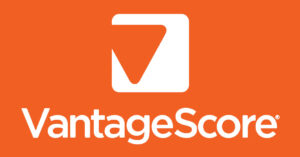New data published by the Consumer Financial Protection Bureau (CFPB) has revealed a rise in home purchase loan shares for minority borrowers, as well as the continued market dominance of the nation’s largest mortgage lenders.
The numbers, which came via submissions to the CFPB under the Home Mortgage Disclosure Act (HMDA), confirmed the marketwide shift from refinance loans to purchase mortgages, a change that traces its roots to the calendar flipping from 2020 to 2021. The 66.8% increase in originations from 2019 to 2020 was driven chiefly by refinances, but the bulk of the 2.4% gain posted from 2020 to 2021 came via jumbo home purchase loans, per the CFPB’s data. Rate-and-term refis peaked in March 2021 but began to decline afterward.
And as purchase loans have grown, the demographic makeup of borrowers has shifted as well. Asian, Black and Hispanic borrowers each saw their purchase loan shares grow year over year in 2021. The share of Asian borrowers grew from 5.5% in 2020 to 7.1% in 2021, while the Black borrower share rose from 7.3% to 7.9% over the same period. The share of Hispanic borrowers grew slightly, ticking up from 9.1% of purchase loans in 2020 to 9.2% the following year. Meanwhile, the share of purchase loans by non-Hispanic white borrowers decreased from 59.1% to 55.6%.
Black and Hispanic borrowers still qualified for lower median loan amounts, had lower median credit scores, and faced higher rates of denials compared to their Asian and non-Hispanic white counterparts. The median home purchase loan amount for Black borrowers was $264,000. Hispanic white borrowers recorded a median figure of $272,000, compared to $274,000 for non-Hispanic white borrowers and $414,000 for Asian borrowers. The median credit score was 691 for Black loan applicants and 716 for Hispanic applicants, compared to 750 for non-Hispanic white applicants and 764 for Asian applicants.
Additionally, HMDA figures revealed that Black and Hispanic borrowers paid higher median interest rates and higher total loan costs.
Also notable within the report’s findings were the opposing trends in purchase and refi loans for low- or moderate-income (LMI) borrowers compared to high-income borrowers. While the LMI borrower share of purchases fell from 30.4% in 2020 to 28.7% in 2021, high-income borrowers enlarged their market share, from 41.2% in 2020 to 43.2% in 2021. Conversely, the LMI borrower share of refinances rose year over from 18.9% in 2020 to 23.9% in 2021. High-income borrowers saw their refi share decline from 45.1% to 42% in that time.
Meanwhile, the biggest fish in the country’s ocean of lenders maintained their dominance in 2021, with the top 25 closed-end lenders holding a combined market share of 43.9%. This collective share has risen each year since 2018. The top 25 lenders were especially dominant within the refinance market, with 53% of reported refi loans coming from those companies.






